Effectiveness and Efficiency – there is still a bit of confusion about this pair of terms. Sometimes, they are used interchangeably. The distinction seems to be a bit blurring. I guess one part of the problem is that these terms sound fairly similar. Another reason is that effectiveness and efficiency often come together in a common context. An activity may be effective and efficient, effective or efficient, or neither of the two.
Key takeaways for the busy reader
There is one popular explanation for the relationship and definition of effectiveness vs. efficiency you can’t miss:
To put it plainly:
You work effectively, if your activities lead to the desired outcome.
You work efficiently, if you realize the desired outcome at minimal cost or effort.
Efficiency and effectiveness are both terms used to assess a particular measure or activity in terms of achievement of objectives. The first one is concerned about the right direction. The latter one is about the relation of expense to benefit.
Another illustration will help to grasp the difference:
- Alternatives 2 and 3 are effective. They lead to the target.
- Of these, alternative 2 is effective and efficient, since it is the direct way from start to target
- Alternative 3 leads to the target too. However, it is not an efficient way to get there.
- Alternative 1 is a short and efficient way. It does not, however, lead to the target. It is a waste of effort anyway.
- Alternative 4 is even worse, since it neither reaches the target nor does it at minimum effort.
Effectiveness and Efficiency compared
| Effectiveness | Efficiency | |
| Definition | Degree of achievement of objectivesCompleteness and accuracy of target achievement | The efforts and resources deployed to achieve a particular objective |
| Relation | Of intended to realized outcome | Of efforts deployed to completeness and accuracy of achieved objective |
| Key questions | What?Does this measure bring us closer to our goal?Are we doing the things that bring us forward to our goal? | How?Is this measure the one that leads to our objective with the least effort?Are we doing things the right way? |
| Priorities | Doing the wrong things efficiently does not lead to target achievement. It is a waste of effort and resourcesDoing the right things is the primary condition | Doing the right things inefficiently leads to target achievement.Doing things right is a secondary condition.It is not, however, a necessary of sufficient condition for effectiveness. |
Is there a conflict of objectives between effectiveness and efficiency?
As mentioned above, effectiveness should have first priority, since efficiency without effectiveness is a waste of resources. Nevertheless, effectiveness as a secondary condition is important too.
Within a given choice of measures, there is not necessarily a direct correlation between every single measure’s effectiveness and efficiency. In order to identify the most suitable measure(s), you could follow these questions:
- What is the right thing to do?
What measures are suitable to achieve an objective? - How do we do it really well?
How to optimize resource utilization and expenses? - Are there any conflicts of objectives?
How does a further increase in efficiency impact effectiveness?
Is it possible to increase efficiency without compromising effectiveness?
Is it possible to increase effectiveness without compromising efficiency?
Can we still achieve our target if we abstain from maximum effectiveness?
How much efficiency (i.e. higher costs) are we willing to trade for optimal target achievement?
A word of warning
Efficiency is important, no doubt. However, Henry Mintzberg reminds us in his blogpost that overreliance on efficiency does not necessarily lead to optimal decisions:
“When we hear the word efficiency we zero in―subconsciously―on the most measurable criteria, like speed of service or consumption of energy. Efficiency means measurable efficiency. That’s not neutral at all, since it favors what can best be measured.â€
It may be difficult to evaluate a set of measures with different degrees of effectiveness and efficiency. The following matrix is a useful tool for comparison:
Here we have the same four measures as in figure 2. Measures 2 and 3 both lead to the desired target. They both are worth exploring, although they come at different cost. Further thinking is needed to decide, which of these two alternatives is best suitable for the particular task.
In this decision situation it is advisable to define the objective as precisely as possible. Which features of the objective are absolutely necessary and which are optional? What exactly do we want to achieve. Some shifts in target priorities may lead to a different assessment of each alternative’s effectiveness.
Similarly, alterations in how a task is executed may change its effectiveness and efficiency. Here are some examples:
Examples
Example 1: Increase website traffic
The operator of a magazine-type website wants to increase traffic on this site. Three options are identified and evaluated:
- A: advertise for the site on other websites
- B: add current news headlines to the homepage
- C: give the website a new design and navigation
Clearly, option B is most effective and efficient. The project team analyzes this option in more detail and realizes that efficiency could be increased further by updating the news headlines only every 6 hours instead of every hour. This, however, would diminish effectiveness.
They have to decide which set of sub-targets has a higher priority for them – a higher increase in traffic at higher costs of a cost-efficient solution that increases traffic only moderately:
Example 2: Market research
A manufacturer of high-tech and production machinery which is manufactured directly to customers’ specifications wants to know which features of his products are most important to his customers. The marketing team identifies three alternative ways to obtain this information:
- A: put a survey form on the company’s website
- B: engage a market research company
- C: have the company’s sales reps see every customer and conduct a personal interview
On the first sight, all three alternatives seem to lead to similar success, although at very different cost. A survey form on the homepage seems to be the most sensible approach since it is by far more cost-efficient than the other options.
In a second step, the management team defines the objective in more detail. The company heavily relies on its relationships to existing customers and wants to consolidate these relationships. Therefor it is vital for them to learn how their existing customers think about their products’ features.
A survey form on the homepage would reach only a small fraction of their customer base, due to the intense personal contact with the sales reps.
A market research company would counteract the strong personal relationships, which the company sees as an asset.
Personal interviews by sales reps will yield most detailed information and strengthen customer relationships as side effect. This options turns out to be most effective.
—————–
Our book recommendation:
- Business Efficiency For Dummies
by Marina Martin
In today’s competitive environment, it’s the businesses with the right set of tools and technologies that get ahead, while others are left in the dust. Business Efficiency For Dummies provides you with practical, useful information on how to run a more effective business while saving time and money in the process.

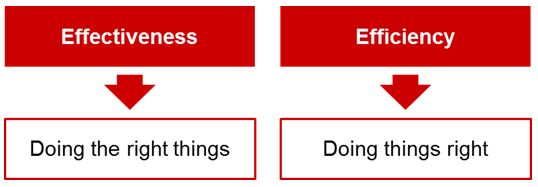
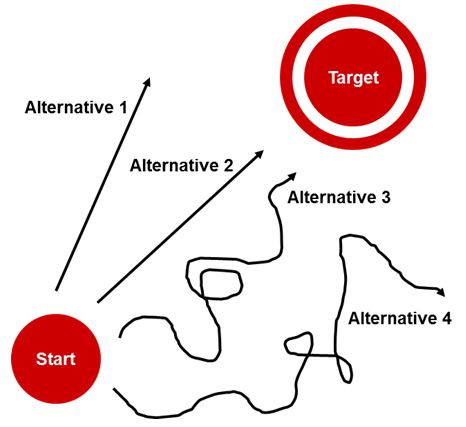
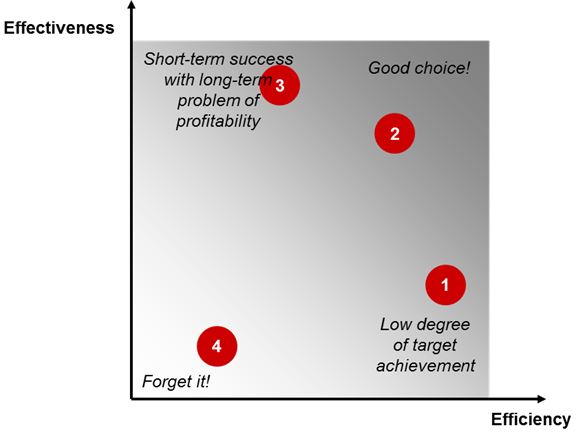
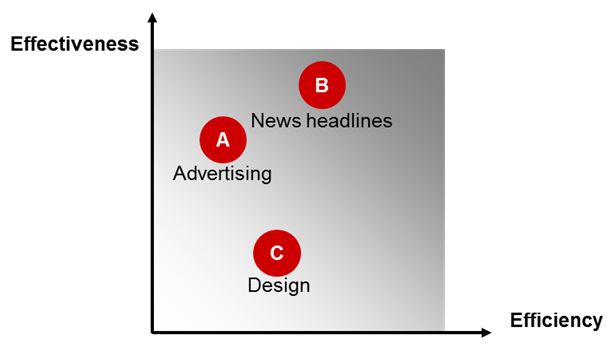
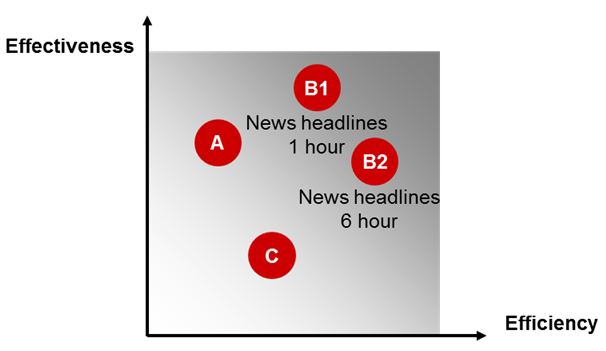
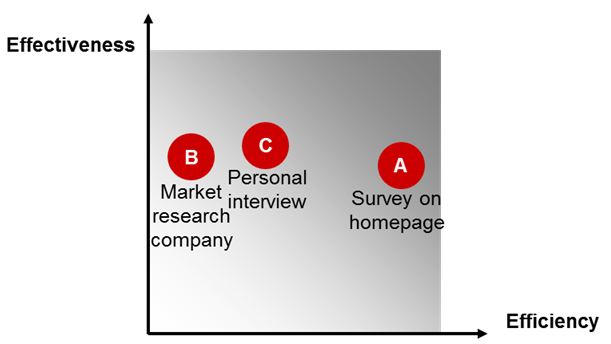
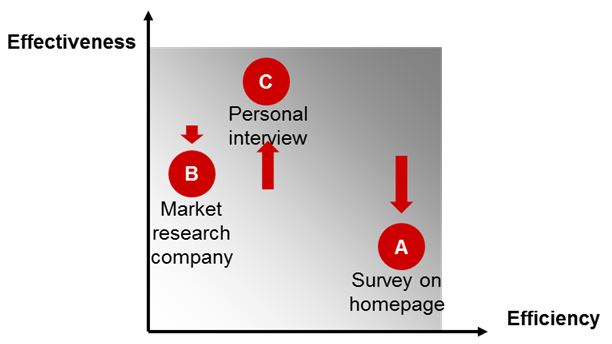
Pingback: Why should you waste time in order to save time | Eddielogic
Pingback: Benchmarking - How to make it work for you in todays business world
Pingback: Why should you waste time in order to save time